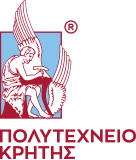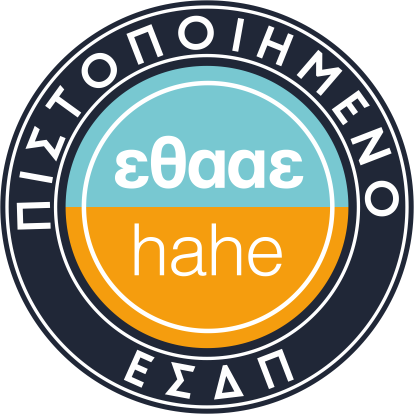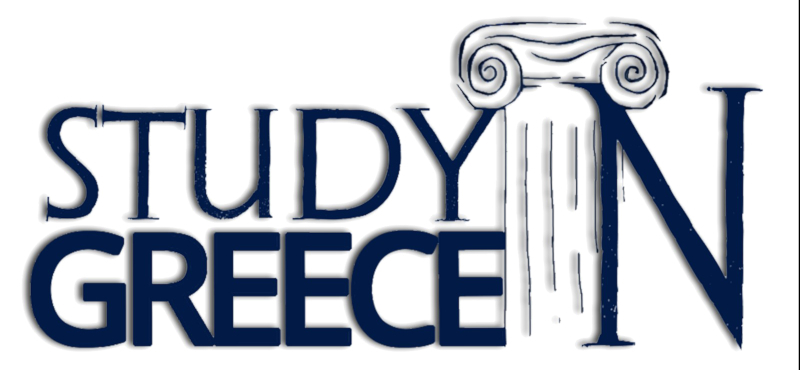Το Πολυτεχνείο
- Όραμα και Αποστολή
- Διοίκηση
- Ιστορικό
- Πανεπιστημιακές Μονάδες
- Ηλεκτρονικές Υπηρεσίες
- Νέα / Ανακοινώσεις / Συζητήσεις
- Συμβαίνει στο Πολυτεχνείο
- Τρόποι Πρόσβασης
- Πράσινο Πολυτεχνείο
- Γνωριμία με το Πολυτεχνείο Κρήτης
- Προωθητικά Videos
- Συλλογές Φωτογραφιών
- Εκδόσεις
- Απολογιστικά Στοιχεία
- Αναπτυξιακά Έργα
- Είσοδος σε Προστατευμένη Περιοχή
- Επικοινωνία
- Αναζήτηση

Νέα / Ανακοινώσεις / Συζητήσεις
- Όλες οι κατηγορίες
- Δημόσιες Ανακοινώσεις
- Δημόσιες Παρουσιάσεις Φοιτητών
- Παρουσίαση Διδακτορικής Διατριβής κ. Ντεντάκη Δημητρίου-Σχολή ΧΗΜΗΠΕΡ
Παρουσίαση Διδακτορικής Διατριβής κ. Ντεντάκη Δημητρίου-Σχολή ΧΗΜΗΠΕΡ
-
Συντάχθηκε 25-09-2024 12:11

Ενημερώθηκε: -
Τόπος:
Σύνδεσμος τηλεδιάσκεψης
Έναρξη: 07/10/2024 15:00
Λήξη: 07/10/2024 17:00Περίληψη (ελληνικά):
Κατά τη φυσιολογία, ο μηχανισμός επούλωσης τραυμάτων λειτουργεί ως ένα
καλά ενορχηστρωμένο και συνεχές μονοπάτι κυτταρικών αντιδράσεων, το οποίο
διαρθρώνεται σε 4 στάδια: 1) αιμόσταση, 2) οξεία φλεγμονή, 3) ιστικός
πολλαπλασιασμός και 4) ιστική αναδιαμόρφωση. Μάλιστα, υπάρχουν επιστημονικά
δεδομένα τα οποία υποδεικνύουν ότι, διαταραχές στις βιολογικές οδούς που
εξελίσσονται στα πιο πρώιμα στάδια αυτού του συνεχούς μονοπατιού της φυσιολογικής
επούλωσης, αποτελούν ισχυρούς προγνωστικούς παράγοντες για κλινική επιδείνωση σε
επιπλεγμένη επούλωση και χρόνια τραύματα. Ταυτόχρονα, το κλινικό και
επιδημιολογικό ενδιαφέρον με επίκεντρο την επούλωση τραυμάτων εκτοξεύεται
παγκοσμίως, λόγω του συνδυασμού των ακόλουθων παραγόντων: της αυξανόμενης
επίπτωσης συστηματικών αγγειοπαθειών που προδιαθέτουν σε περιφερική ισχαιμία,
ιστική υποξία και προβληματική επούλωση, όπως ο σακχαρώδης διαβήτης, της
γήρανσης του παγκόσμιου πληθυσμού και της αμφίβολης ικανότητας των διαθέσιμων
θεραπευτικών επιλογών να αντιμετωπίσουν μια ολοένα και πιθανότερη, γενικευμένη
έξαρση των επιλεγμένων τραυμάτων.
Η χορήγηση οξυγόνου σε αέρια μορφή (O2), έχει αποδειχθεί συστηματικά ότι
οδηγεί σε ευεργετικά αποτελέσματα σε δερματικά τραύματα, αντικατοπτρίζοντας τον
κεντρικό ρόλο του O2 στη φυσιολογική επούλωση. Το πλέον χαρακτηριστικό
παράδειγμα είναι η θεραπεία με υπερβαρικό O2, η οποία έχει καθιερωθεί μεταξύ των
αποτελεσματικότερων στρατηγικών αντιμετώπισης για τα διαβητικά τραύματα, καθώς
επίσης και σε πολλές άλλες κλινικές ενδείξεις. Ωστόσο, ένας σημαντικός περιορισμός
έγκειται στη βραχύβια αποτελεσματικότητα του O2 όταν χορηγείται σε αέρια μορφή, ως
αποτέλεσμα της παθητικής διάχυσης διαμέσου των βιολογικών ιστών σε συνάρτηση με
τις κατά τόπους βαθμιδώσεις στη μερική πίεση του O2. Στο πλαίσιο αυτό, νεότερες
τεχνολογίες με τη δυνατότητα να παρέχουν διαλυμένο οξυγόνο (Dissolved O2, DO)
μέσα σε υδατικά διαλύματα, γνωστά ως διαλύματα διαλυμένου οξυγόνου (Dissolved O2
solutions, DOS), διερευνώνται ως μια καινοτόμος τεχνολογική προσέγγιση για τη
βελτιστοποίηση των θεραπειών οξυγόνωσης των τραυμάτων. Πράγματι, επιτρέποντας
στο O2 να καθίσταται σταδιακά βιοδιαθέσιμο μέσα στο υδάτινο μέσο, ένα διάλυμα DOS
μπορεί, θεωρητικά, να παρέχει υψηλές ποσότητες οξυγόνου για μεγαλύτερο χρονικό
διάστημα σε σύγκριση με τις θεραπείες που χορηγούν O2 στην αέρια φάση. Ωστόσο, η
μακρόχρονη διατήρηση υψηλών επιπέδων DO χωρίς τη χρήση δυνητικά τοξικών
επιφανειοδραστικών παραγόντων και πολύπλοκων χημικών ενώσεων, παραμένει μία
από τις μεγαλύτερες προκλήσεις στο συγκεκριμένο επιστημονικό πεδίο.
Η έρευνα που εκπονείται στην παρούσα διδακτορική διατριβή, μελετά τη
δυνατότητα παραγωγής ενός διαλύματος DOS αξιοποιώντας αποκλειστικά τις αρχές
της Φυσικής που διέπουν την αλληλεπίδραση μεταξύ υγρών και αερίων, χωρίς τη χρήση
χημικών επιφανειοδραστικών παραγόντων ή άλλων προσθέτων, καθώς και την
αξιοποίηση της τεχνολογίας αιχμής των νανοφυσαλίδων O2 σε βιοϊατρικές εφαρμογές
για την επούλωση τραυμάτων και την αναγέννηση δερματικού ιστού. Αρχικά,
διεξάγουμε μια ενδελεχή ανάλυση των διαθέσιμων τεχνολογιών με τη δυνατότητα να
χρησιμοποιηθούν για παροχή DO σε ιστούς που επουλώνονται, στοχεύοντας στην
ανάδειξη της πλέον υποσχόμενης τεχνολογικής κατηγορίας προς περαιτέρω
διερεύνηση. Μέσω συστηματικής συναξιολόγησης του μηχανικού υπόβαθρου, του
δυναμικού οξυγόνωσης, των μηχανισμών παροχής DO στου ιστούς, των παραμέτρων
ασφαλείας και της αποτελεσματικότητας ως προς την αναγέννηση δερματικού ιστού
για όλες τις τεχνολογίες, αναδεικνύουμε τα συγκριτικά πλεονεκτήματα της χρήσης
διαλυμάτων DOS που παρασκευάζονται χωρίς χημικά πρόσθετα, και υπογραμμίζουμε
τις δυνατότητες της τεχνολογίας νανοφυσαλίδων O2 στη συγκεκριμένη τεχνολογική
κατηγορία. Παράλληλα, εισάγουμε ένα πρωτότυπο σύστημα ταξινόμησης για τις
τεχνολογίες DO που μελετώνται σε εφαρμογές σχετικές με την επούλωση τραυμάτων.Στη συνέχεια, παρουσιάζουμε τον ερευνητικό σχεδιασμό, την επιστημονική
τεκμηρίωση και την πρακτική εφαρμογή ενός νέου in vivo πρωτοκόλλου, που
αποσκοπεί στην επιτάχυνση της ανάπτυξης νέων βιοτεχνολογιών στον τομέα της
επούλωσης τραυμάτων, όπως οι τεχνολογίες παροχής DO, και της ενσωμάτωσής τους
στην κλινική πράξη. Προσομοιάζοντας το σχεδιασμό κλινικών δοκιμών αρχικού σταδίου,
και ενσωματώνοντας εγκεκριμένες μεθοδολογίες από προηγούμενα πρωτόκολλα, το
προτεινόμενο πρωτόκολλο παρέχει ένα λεπτομερή οδηγό για την ολιστική αξιολόγηση
των βασικών αρχών μηχανικής, των απαιτούμενων ελέγχων ποιότητας, της βιολογικής
ασφάλειας και της θεραπευτικής αποτελεσματικότητας στην επούλωση τραυμάτων για
όλες τις νέες βιοτεχνολογίες που αναπτύσσονται στο συγκεκριμένο τομέα. Σημειώνεται
ότι, οι πειραματικοί χειρισμοί στο προτεινόμενο πρωτόκολλο έχουν επιλεγεί με γνώμονα
την απλότητα και τη βέλτιστη επαναληψιμότητα, λαμβάνοντας υπόψιν και το γεγονός
ότι, στην εποχή μας, ολοένα και αυξάνονται τα ερευνητικά έργα στο συγκεκριμένο
πεδίο τα οποία εκτελούνται στο μεγαλύτερο ποσοστό τους από βιοχημικούς και
βιοϊατρικούς μηχανικούς.
Στη συνέχεια, εφαρμόζουμε το προαναφερόμενο in vivo πρωτόκολλο για να
μελετήσουμε ένα «απλό» διάλυμα DOS (plain DOS), το οποίο δεν περιέχει κανένα
παράγοντα ικανό να ενισχύσει τα επίπεδα DO ούτε με χημικά πρόσθετα, αλλά ούτε και
με φυσικό τρόπο. Το διάλυμα αυτό παρασκευάζεται μέσω έγχυσης O2 υψηλής
καθαρότητας (>99,9%) σε αποστειρωμένο διάλυμα φυσιολογικού ορού (0.9% NaCl),
υπό προκαθορισμένες συνθήκες. Στόχος μας είναι η συλλογή προκαταρκτικών in vivo
δεδομένων σχετικά με τη χορήγηση ενός διαλύματος DOS με τα προαναφερθέντα
χαρακτηριστικά, συμπεριλαμβανομένου του μεγέθους και του χρόνου παραμονής των
επιπέδων DO στο προκύπτον διάλυμα, των βέλτιστων οδών χορήγησης, των
παραμέτρων δοσολογίας, της βιολογικής ασφάλειας και της αποτελεσματικότητας σε
τραύματα πλήρους εκτομής σε υγιή ποντίκια SKH1. Τα ευρήματά μας υποδεικνύουν ότι
το διάλυμα plain DOS μπορεί να παρέχει υψηλές συγκεντρώσεις DO συστηματικά, για
τουλάχιστον 14 ημέρες, ενώ είναι ασφαλές για in vivo χορήγηση ενδοφλεβίως, τοπικά
και από το στόμα. Επίσης, τα δεδομένα μας υποστηρίζουν ότι τόσο η ενδοφλέβια, όσο
και η από του στόματος χορήγηση του διαλύματος plain DOS έχει πολλά υποσχόμενα
αποτελέσματα ως προς την ενίσχυση της φυσιολογικής επούλωσης, μακροσκοπικά και
ιστοπαθολογικά.Τέλος, εφαρμόζουμε το προτεινόμενο in vivo πρωτόκολλο για να αξιολογήσουμε
ένα διάλυμα DOS που παρασκευάστηκε αξιοποιώντας την τεχνολογία αιχμής των
νανοφυσαλίδων O2, αποφεύγοντας ταυτόχρονα τη χρήση εξωγενών χημικών ουσιών, το
οποίο αναφέρουμε ως “διάλυμα εμπλουτισμένο με νανοφυσαλίδες O2” (O2
nanobubble-enriched water, ONBW). Τα ευρήματά μας αποδεικνύουν ότι το διάλυμα
ONBW διατηρεί υψηλές συγκεντρώσεις DO καθ' όλη τη διάρκεια της περιόδου
αξιολόγησης των 14 ημερών, ενώ είναι απόλυτα ασφαλές για συστηματική χορήγηση in
vivo, είτε ενδοφλεβίως είτε από το στόμα. Επιπλέον, μελετώντας τραύματα πλήρους
δερματικής εκτομής σε υγιή ποντίκια SKH1, επεκτείνουμε τις παρατηρήσεις μας
δείχνοντας ότι, ανεξάρτητη χορήγηση με δύο ενδοφλέβιες ενέσεις ή με από του
στόματος λήψη του διαλύματος ONBW, μπορεί να επιταχύνει τη μακροσκοπική
σύγκλειση των τραυμάτων και να βελτιώσει την επιθηλιακή αναγέννηση και την
εναπόθεση κολλαγόνου ιστοπαθολογικά.
Abstract (αγγλικά):
Physiologically, the healing mechanism operates as an orchestrated continuum
of molecular responses, organized in 4 stages: 1) hemostasis, 2) acute inflammation, 3)
tissue proliferation, and 4) remodeling. There is evidence indicating that, disruptions in
the most upstream biological pathways in this continuum of normal healing, are strong
prognosticators of downstream wound chronicity and pertinent complications. Clinical
and epidemiological interest in wound healing is increasing on a global scale, due to a
combination of the following factors: the rising prevalence in systemic vasculopathies
predisposing to peripheral ischemia, tissue hypoxia, and suboptimal healing, such as
diabetes mellitus, the aging world population, and the questionable capacity of the
available management and prevention strategies to confront a potentially generalized
surge in complicated wounds.
Administration of gaseous oxygen (O2) has consistently demonstrated beneficial
outcomes in cutaneous wounds, reflecting the pivotal role of O2 in physiologic healing.an important limitation lies in the short-lived efficacy of O2 when administered in its
gaseous form, as a result of passive diffusion through biological tissues in response to
local O2 pressure gradients. Thereby, technologies supplying dissolved oxygen (DO)
within aqueous solutions, namely DO solutions (DOS), are currently investigated as a
novel approach to enhancing wound oxygenation. By enabling O2 to become gradually
bioavailable in the liquid medium, a DOS can theoretically supply high oxygen amounts
for longer periods compared to gas-based O2 therapies. However, sustaining DO levels
without using potentially toxic artificial surfactants and complex chemical additives,
remains one of the biggest challenges in the field.
The research described herein, aims to document the capacity to manufacture a
DOS by exclusively leveraging the physics of the gas-liquid interphase, in the absence
of chemical surfactants or additives, and to incorporate the cutting-edge technology of
O2 nanobubbles in formulations that are suitable for biomedical applications in wound
healing and cutaneous regeneration. First, we conduct a comprehensive analysis of the
existing technologies that can be used for supplying DO to healing tissues, with the
aim to identify the most promising technological category for further investigation. Via a
systematic co-evaluation of engineering principles, oxygenating effects, biomechanics
of DO delivery, safety parameters, and healing-related efficacy for all technologies, we
highlight the benefits of using a DOS containing no exogenous chemicals, and discuss
the potential of O2 nanobubble technology in this approach. Concurrently, we introduce
an original classification system for the DO technologies tested in healing applications.
Then, we discuss the design, scientific rationale, and implementation of a novel
in vivo protocol, aiming to facilitate the clinical translation of biotechnologies developed
for healing applications, such as DO-supplying therapies. By simulating the design of
early-stage clinical trials, and incorporating standardized methodological components
from previous protocols, we enable a holistic examination of engineering fundamentals,
quality-control requirements, biological safety, and a preliminary assessment of healing
efficacy for new biotechnologies in the field. Of note, the experimental manipulations in
the proposed protocol have been selected to maximize simplicity and reproducibility;
to account for the fact that, a growing number of relevant research projects are carried
out primarily by biochemical and biomedical engineers nowadays.Next, we implement the aforementioned in vivo protocol to study a “plain” DOS
containing no physical enhancements to sustain DO delivery, which was manufactured
via infusion of high-purity (>99.9%) O2 into sterile normal saline (N/S; 0.9% NaCl) under
predetermined conditions, without chemical additives. Our aim is the collection of
preliminary data on the in vivo administration of a DOS with the aforementioned
characteristics, including the magnitude and sustainability of DO levels in the final
formulation, the best routes of administration, optimal dosing parameters, biological
safety, and healing outcomes in full-thickness excisional wounds on healthy SKH1
mice. Our findings suggest that the plain DOS can deliver high DO concentrations
consistently and sustainably for at least 14 days, while being safe for in vivo
administration intravenously, locally, and per os. Also, we show a promising effect of
intravenous and per os administration of plain DOS in physiologic wound healing,
macroscopically and histopathologically.
Finally, we implement the proposed in vivo protocol to evaluate a DOS
manufactured by employing the cutting-edge technology of O2 nanobubbles, while also
eschewing the use of exogenous chemicals; which we refer to as oxygen nanobubbleenriched
water solution (ONBW). Our findings show that the ONBW maintains high DO
concentrations throughout a 14-day evaluation period, and is completely safe in vivo
for systemic administration, either intravenously or per os. Furthermore, by monitoring
full-thickness excisional wounds on healthy SKH1 mice, we extend our observations to
show that, independently, two intravenous injections and per os intake of the ONBW
can accelerate wound closure macroscopically, and improve epithelial regeneration
and collagen deposition histopathologically.
A characteristic example is hyperbaric O2 therapy, which has become an established
management strategy for diabetic wounds, alongside multiple clinical indications. Yet, an important limitation lies in the short-lived efficacy of O2 when administered in its
gaseous form, as a result of passive diffusion through biological tissues in response to
local O2 pressure gradients. Thereby, technologies supplying dissolved oxygen (DO)
within aqueous solutions, namely DO solutions (DOS), are currently investigated as a
novel approach to enhancing wound oxygenation. By enabling O2 to become gradually
bioavailable in the liquid medium, a DOS can theoretically supply high oxygen amounts
for longer periods compared to gas-based O2 therapies. However, sustaining DO levels
without using potentially toxic artificial surfactants and complex chemical additives,
remains one of the biggest challenges in the field.
The research described herein, aims to document the capacity to manufacture a
DOS by exclusively leveraging the physics of the gas-liquid interphase, in the absence
of chemical surfactants or additives, and to incorporate the cutting-edge technology of
O2 nanobubbles in formulations that are suitable for biomedical applications in wound
healing and cutaneous regeneration. First, we conduct a comprehensive analysis of the
existing technologies that can be used for supplying DO to healing tissues, with the
aim to identify the most promising technological category for further investigation. Via a
systematic co-evaluation of engineering principles, oxygenating effects, biomechanics
of DO delivery, safety parameters, and healing-related efficacy for all technologies, we
highlight the benefits of using a DOS containing no exogenous chemicals, and discuss
the potential of O2 nanobubble technology in this approach. Concurrently, we introduce
an original classification system for the DO technologies tested in healing applications.
Then, we discuss the design, scientific rationale, and implementation of a novel
in vivo protocol, aiming to facilitate the clinical translation of biotechnologies developed
for healing applications, such as DO-supplying therapies. By simulating the design of
early-stage clinical trials, and incorporating standardized methodological components
from previous protocols, we enable a holistic examination of engineering fundamentals,
quality-control requirements, biological safety, and a preliminary assessment of healing
efficacy for new biotechnologies in the field. Of note, the experimental manipulations in
the proposed protocol have been selected to maximize simplicity and reproducibility;
to account for the fact that, a growing number of relevant research projects are carried
out primarily by biochemical and biomedical engineers nowadays.Next, we implement the aforementioned in vivo protocol to study a “plain” DOS
containing no physical enhancements to sustain DO delivery, which was manufactured
via infusion of high-purity (>99.9%) O2 into sterile normal saline (N/S; 0.9% NaCl) under
predetermined conditions, without chemical additives. Our aim is the collection of
preliminary data on the in vivo administration of a DOS with the aforementioned
characteristics, including the magnitude and sustainability of DO levels in the final
formulation, the best routes of administration, optimal dosing parameters, biological
safety, and healing outcomes in full-thickness excisional wounds on healthy SKH1
mice. Our findings suggest that the plain DOS can deliver high DO concentrations
consistently and sustainably for at least 14 days, while being safe for in vivo
administration intravenously, locally, and per os. Also, we show a promising effect of
intravenous and per os administration of plain DOS in physiologic wound healing,
macroscopically and histopathologically.
Finally, we implement the proposed in vivo protocol to evaluate a DOS
manufactured by employing the cutting-edge technology of O2 nanobubbles, while also
eschewing the use of exogenous chemicals; which we refer to as oxygen nanobubbleenriched
water solution (ONBW). Our findings show that the ONBW maintains high DO
concentrations throughout a 14-day evaluation period, and is completely safe in vivo
for systemic administration, either intravenously or per os. Furthermore, by monitoring
full-thickness excisional wounds on healthy SKH1 mice, we extend our observations to
show that, independently, two intravenous injections and per os intake of the ONBW
can accelerate wound closure macroscopically, and improve epithelial regeneration
and collagen deposition histopathologically.
Σύνδεση χρήστη
Εισάγετε το όνομα χρήστη και το μυστικό κωδικό για να εισέλθετε στον ιστότοπο














